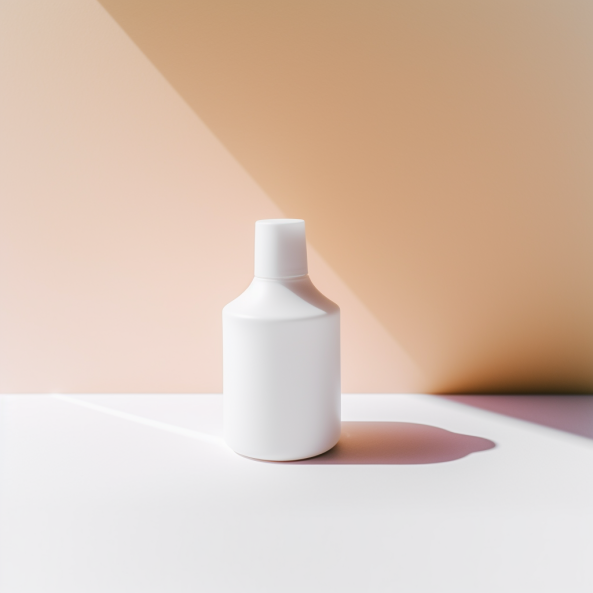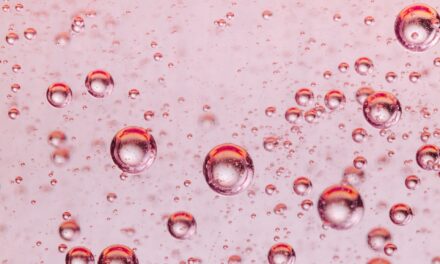How to Build a Good Routine For Pigmentation Issues?
Hyperpigmentation, or an excess of natural pigment in some areas of the skin, can take a form of age spots, dark post-acne marks or other darker areas on the skin. They can be caused by a variety of factors, including sun damage, skin trauma, hormonal changes, and medication side effects. Regardless of the underlying reason, sun exposure is always the trigger for pigmentation. While there’s no “silver bullet” for reducing pigmentation spots, a good skincare regimen can help. In this article, we’ll explore the causes of hyperpigmentation and share the best topical skincare practices to help you achieve an even skin tone.

Why does hyperpigmentation happen?
Pigmentation spots can appear because of a few different reasons:
- “Errors” in the natural skin pigment (melanin) production and storage because of sun damage accumulated over time. In other words, photo aging.
- Results of a skin trauma. Areas of the old skin traumas often get darker than the rest of the skin. This can happen after acne spots, insect bites, ingrown hair, cuts, scratches, burns, irritant or allergic skin reactions, eczema flairs, overdone cosmetic peels and other procedures like laser skin treatments.
- Hormonal changes. Uneven pigmentation can appear in or after pregnancy, with start of hormonal contraceptions or in menopause. Symmetrical areas of hormones-related hyperpigmentation are often diagnosed as “melasma”.
- Side-effects of oral medication.
Regardless of the underlying reason, sun radiation is always the trigger for the pigmentation.
The less sun exposure your skin gets, the less likely you are to get pigmentation issues from the causes above. (And the less sun exposure you get, the less dark the pigmented areas will be if you get them).
All skin tones can suffer from uneven pigmentation, but it is more frequent and more visible in darker skin. It also often takes longer to see improvements from anti-pigmentation regimen for darker skin.
The skin pigment, melanin, is in both the top layer of our skin (epidermis) and in the deeper one (dermis). Pigmentation spots often affect the both layers of the skin. If the pigmentation spot has a bluish undertone, it is a sign that it originates in the deeper layer of the skin. This type of pigmentation spots takes longer to heal.
What skincare actives work against hyperpigmentation?
Skincare actives that targets pigmentation can work in a few different ways. Some ingredients can get make skin cells produce less melanin. Actives like thiamidol, hydroquinone, arbutin, kojic acid, azelaic acid, tranexamic acid work this way (in dermatology, they are called “tyrosinase-inhibitors”). Other actives, like niacinamide can make skin store less melanin. Anti-oxidants like ascorbic acid help reduce the damage skin gets from sun exposure and reduce melanin production this way (it also works a tyrosinase inhibitor). Chemical exfoliants like glycolic or lactic acids remove the surface layer of the skin cells. This way skin gets to shed the cells with bigger melanin deposits faster. Retinoids help reduce pigmentation in a few different ways at once.
Overall, it is a good idea to combine 2-3 different anti-pigment actives in your regimen. Important warning: do not overdo it with actives and exfoliation. You want to avoid skin irritation, because irritation on its own can result in more pigmentation. This is especially important if your natural skin tone is dark.
Learn more about the top actives for even skin tone, effective concentrations and how to include them into your skincare regimen
How does a good skincare routine for hyperpigmentation look like?
Here is what you need in terms of skincare to reduce pigmentation spots:
- A daily broad spectrum sunscreen with SPF 30 or more.
- A lot of patience: it usually takes 3 to 12 months to see good results from anti-pigmentation topical skincare.
- 1-3 topical skincare actives used regularly that help reduce melanin production and/or storage (see above). If your skin is sensitive, opt for less irritating actives like niacinamide, azelaic acid, lower concentrations of ascorbic acid (10%) and less irritating retinoids like retinal. Thiamidol also seems to rarely cause irritation, but be more careful with this active as the research on it is new.
- Gentle chemical exfoliation 1-2x a week if you’d like to speed up the process and your skin is resilient enough to tolerate it.
You do not want to overdo it with your anti-pigmentation actives and exfoliants. They can lead to irritation – and irritation, in turn, can trigger more pigmentation.
There is no one-size-fits-all solution against pigmentation. A lot depends on your skin and what actives it can tolerate without irritation. But if you’d like an example of what an effective skincare regimen for hyperpigmentation could include, here it is:
AM:
- Treatment with 10%-20% azelaic acid
- Serum with 10%-15% of ascorbic acid
- Moisturizer with 2%-6% of niacinamide.
- Broad-spectrum sunscreen SPF 30+ with thiamidol
PM:
- Gentle cleanser
- Retinoid treatment (for example, retinol 0.5% or hydroxypinacolone retinoate 0.5%)
- Treatment with thiamidol
- Moisturizer with 2%-6% of niacinamide.
Once a week: use an exfoliant with 10-15% of total concentration of exfoliating acids (AHAs and PHAs)
If your skin is sensitive, use less concentrated actives, skip some of them all together and/or apply the retinoid less frequently (for example every other day or 2-3 times a week).
It can take as long as 6 months of a consistent routine to see real results.
Choose your products based on actives
WIMJ Search allows you to select skincare products based on what’s inside. Filter products by actives included, and exclude ingredients you don’t want. Check the concentration of ingredients and potential irritants.
Sources
-
Management of hyperpigmentation: Current treatments and emerging therapies https://onlinelibrary.wiley.com/doi/full/10.1111/pcmr.12986
-
Retinoids and azelaic acid to treat acne and hyperpigmentation in skin of color https://europepmc.org/article/med/23652891
-
Effects of Topical Retinoids on Acne and Post-inflammatory Hyperpigmentation in Patients with Skin of Color: A Clinical Review and Implications for Practice https://link.springer.com/article/10.1007/s40257-021-00643-2
-
Retinoid therapy of pigmentary disorders https://onlinelibrary.wiley.com/doi/abs/10.1111/j.1529-8019.2006.00085.x
-
Prospective, randomized, double-blind assessment of topical bakuchiol and retinol for facial photoageing https://onlinelibrary.wiley.com/doi/full/10.1111/bjd.16918
-
Topical Treatment of Melasma https://www.ncbi.nlm.nih.gov/pmc/articles/PMC2807702/
-
The top 10 cosmeceuticals for facial hyperpigmentation https://onlinelibrary.wiley.com/doi/abs/10.1111/dth.14095
-
Cosmeceuticals for Hyperpigmentation: What is Available https://www.ncbi.nlm.nih.gov/pmc/articles/PMC3663177/
-
Topical tretinoin (retinoic acid) treatment of hyperpigmented lesions associated with photoaging in Chinese and Japanese patients: A vehicle-controlled trial https://www.sciencedirect.com/science/article/abs/pii/S0190962294700117
-
The Role of Topical Retinoids in the Treatment of Pigmentary Disorders https://link.springer.com/article/10.2165/00128071-200910040-00005
-
Usefulness of retinoic acid in the treatment of melasma https://www.sciencedirect.com/science/article/abs/pii/S0190962286702478
-
The use of retinoids in the treatment of photoaging https://onlinelibrary.wiley.com/doi/abs/10.1111/j.1529-8019.2006.00087.x
Related Articles
Azelaic Acid: How It Works and Why You Might Need It In Your Skincare
Azelaic acid may not be the most hyped skincare ingredient, but, frankly speaking, it deserves way more recognition. Despite its underappreciated status, azelaic acid boasts a myriad of evidence-backed benefits, including combating acne, mitigating rosacea, addressing hyperpigmentation, and fighting against free radicals.
Thiamidol
Dive into our comprehensive guide to thiamidol, an effective tyrosinase inhibitor with impressive results against hyperpigmentation. Explore its science, evidence, and how to incorporate it into your skincare routine.
Products for Melanated Skin: An Essential Guide to Choosing the Right Skincare
You can choose better care products for melanin-rich skin if you understand your skin tone needs better. If you have melanated skin – or, in other words, a naturally dark skin tone – it’s essential to have a more gentle skincare approach and a stronger focus on avoiding skin trauma, irritation, and inflammation. Let’s delve into the nitty-gritty of caring for melanated skin.



